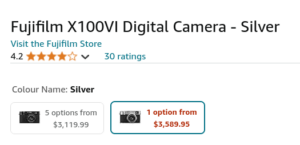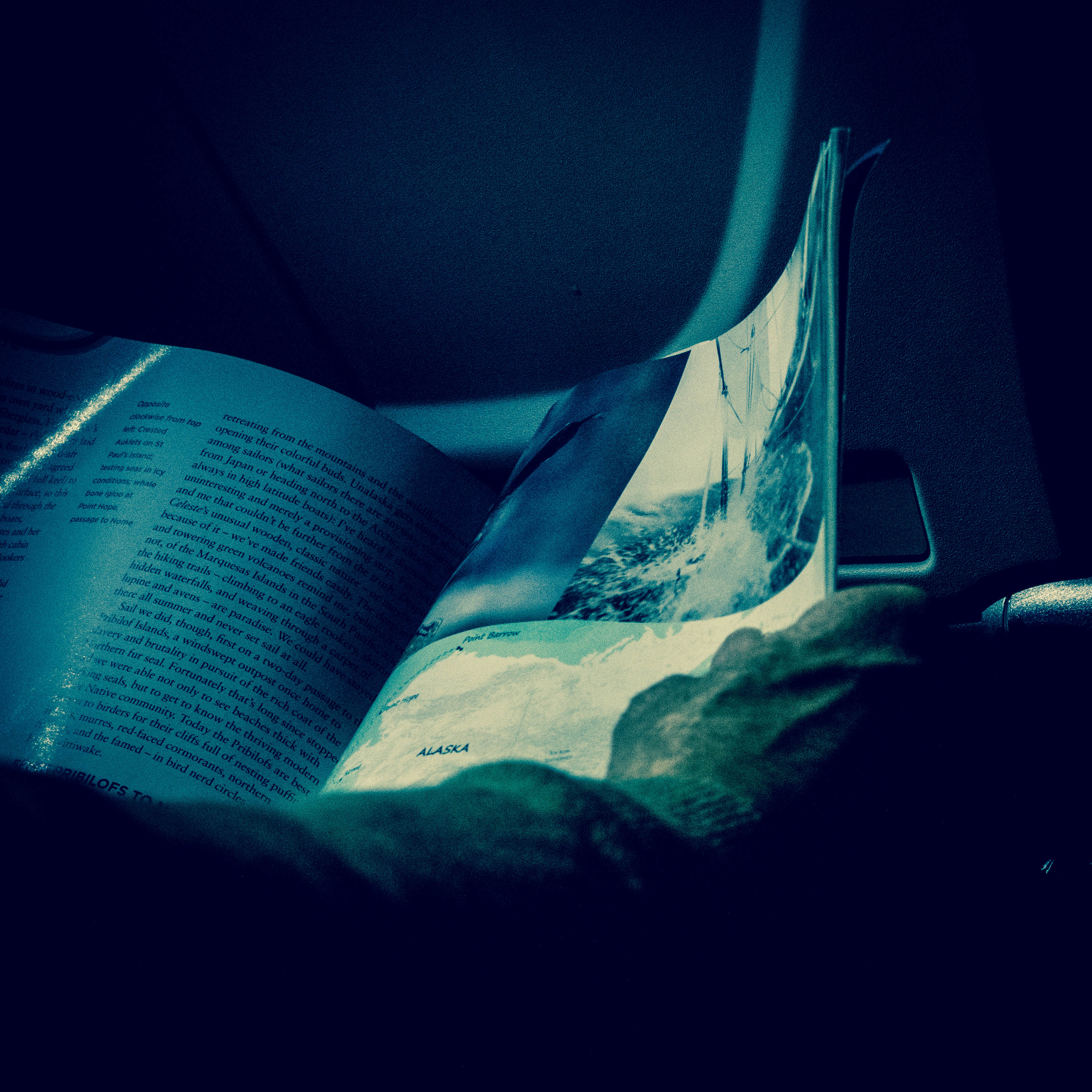The Leica M is the de facto digital rangefinder camera.
Rangefinder
What’s a rangefinder? It’s a viewfinder where a moving part is coupled with the lens focusing to triangulate the parallax. That moving part is projecting the image taken offset the viewfinder, and move when the lens focusing moves. If the two images coincide, the triangulation is focused on the subject, indicating the lens is now in focus. Still not following? You can read about rangefinder cameras on wikipedia.
The rangefinder is a great device to be able to focus precisely without having a through the lens viewfinder like on a reflex camera. It allowed a more compact camera design than a reflex camera, are there is no need for a mirror box, while still allowing precise focus. This was long before auto focus systems. Which is at the heart of the Leica M, mostly unchanged from the 50s design, at least in principle.
Some quite unique cameras like the ultra wide Fujifilm TX-1 or Hasselblad X-Pan were rangefinder cameras. This was a good solution that a reflex design couldn’t allow easily. There were also some medium format rangefinder like the Mamiya 7 that allowed much more compact design.
On of the design constraint of a rangefinder is that the field of view of the viewfinder is fixed, and while some camera can change the frame lines depending of the focal length of the lens, it can’t got wider than it is, and the longer the lens, the smaller the frame is. In general lens shorter than 28mm were less accurate to frame do to the frame line being outside the field of view.
So now that we have mirrorless, through the lens (auto) focusing, what’s the point of a rangefinder camera? The rangefinder is a precision device much more fragile of complex to manufacture, that may need readjustment over time. Part of the design of the rangefinder is that the viewfinder is offset from the lens, and usually also offers a wider field of view. This leads to a style of shooting that is particular to it.
I once shot a couple of rolls on a Leica M7 in 2011 and I loved it. The feeling, the results, I can’t really describe it though. You can still buy a Leica M6 new for little under CA$8,000 (body only).
Digital rangefinder camera
In 2004, Epson did make the R-D1. It was a digital rangefinder camera, the first one. While still being able to use Leica M lenses, it sold for a fraction of the price of Leica flagship M7 rangefinder film camera, as it was based on the much cheaper Cosina R bodies. This camera wasn’t perfect, but filed a niche. I think one of the biggest limitations was that it was an APS-C sensor, thus had a 1.5x crop factor. The 35mm lens you were fond of on a Leica suddenly became like a 50mm. If you loved wide angle, then it became a bigger issue, wider angle lenses, even non-Leica, where much more expensive. Full frame sensors weren’t a thing at the time. When Leica released the M8, it had the same issue, at a much higher price; albeit with the APS-H sensor, the crop was only 1.33x. With the discontinuation of the Epson R-D1, Leica M became the only game in town.
Fujifilm X
In 2010 Fujifilm introduced the Fujifilm X100 and a year later the Fujifilm X-Pro1. The former introduced Fujifilm hybrid viewfinder, which led to a lot of people wrongly calling it a rangefinder camera, which is inaccurate. Rangefinder style is probably a better moniker.
What did the X100 offer? The optical viewfinder allow shooting more like with a rangefinder camera, with overlaid frame lines (parallax corrected as bonus) in a wider view than the lens offered ; as well as other indicator that a digital display can offer. The focusing was done using an auto focus system like on most digital camera, through the lens. The hybrid part allowed to switch, as needed, to a completely electronic viewfinder. Best of both world.
The X-Pro1 brought this viewfinder to an interchangeable lens system, based on an APS-C sensor, that the whole Fujifilm X is now based on, with more traditional body designs. I bought one sight unseen. I love it and is saddened by the fact that the X-Pro3 is no longer available, and that the X-100 VI (the 6th generation) isn’t available yet.
Pixii
In 2018 we started hearing about the Pixii. A French made rangefinder digital camera. I noticed it again recently in my meanderings, I then realised I had never followed up on it ; I actually had forgotten about it, maybe because I thought it was a vapor ware, or something. The camera is real. At about US$3,000, it is priced less than half of the Leica M that goes for US$8,000.
It is definitely a rangefinder camera, with a digital overlay. That’s awesome. The image quality seems to be good according to reviewers. Pixii even offer the DCP profile for colour, and how to use them in Rawtherapee which it to be outlined as not other camera vendor care outside of the Adobe monopoly or their sub-optimal application.
What else?
It seems that in the 2023 model (A2572) some of the controls require a companion proprietary phone app, a bit like the Leica M-10D. This raises a lot of red flags as it mean the camera will be much less usable without it, which mean that if Pixii ever discontinue the app, or the phone gatekeeper do, you are SOL. It’s a bad industry trend.
The other point is the fixed storage, where you buy your camera like a phone with a fixed memory capacity. This is nuts. Not only you pay an unnecessary premium (US$270 for going from 16G to 64GB, while a 128GB SDXC goes for US$20, or a higher speed for US$120), but what happens to having separate cards? If you need more storage, connect the camera to your computer they say. What happens if your flash storage die? Like a MacBook, you throw it away? For example the Leica T has some internal storage that is apparently a microSD that you can upgrade if you open the camera, and it is in addition to an external slot. I clearly remember the outrage when a major brand camera didn’t come with dual card slot. So I don’t get how not having one would even get considered… It feels like they designed it like a smartphone.
The last point, and it’s even more fundamental. It’s the sensor size. There is nothing wrong with an APS-C sensors, they can deliver quality even in low light, and Fujifilm proved it. It’s great with a dedicated lens lineup, but the M-mount lenses come from film, and are designed for a full frame system that is the Leica M since the Leica M9. If you have a set of prime lenses for your shooting style, the Pixii will need a different set to compensate for the 1.5x crop factor.
Macfilos has a review of the camera. They say:
The Pixii is, in some ways, the most modern rangefinder camera imaginable. There was no legacy to consider when designing the body.
Ahem, M-mount lenses are a significant legacy. Even more that they are designed for a full frame sensor (or a 24×36 frame on 35 mm film).
About the app:
*It is technically possible to use the Pixii almost completely without the app (see the comments section), but it is the opinion of the reviewer that this makes little sense as the whole concept of the camera is based on connectivity.
I’m still of the belief this is a planned obsolescence item. Software does suddenly stop working. Software from trillion dollar corporation do. Software from smaller outlet do. Mobile app store do remove apps for many reasons. If that ties important feature, this turn your camera into a brick. The Panasonic Lumix S9 might also suffer from this.
Now I’d love to take it for a spin, being able to say how it feels as a camera. The shortcomings on paper that I mention are not fatal as an image capturing device.
Update 2 August 2024: Added that the M8 had a 1.33x crop.






